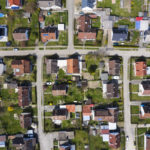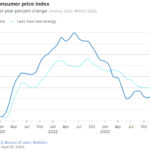It’s been a decade since the onslaught of the Great Recession, and the housing market has healed and changed drastically since then. Home prices in many markets have hit record highs—beating their pre-recession levels—and foreclosure rates are historically low, according to the National Association of REALTORS®.
Stronger lending and regulatory reforms in recent years also have prevented the formation of another housing bubble, says NAR Chief Economist Lawrence Yun, discounting concerns raised by other industry experts. “Over the past 10 years, prudent policy reforms and consumer protections have strengthened lending standards and eliminated loose credit, as evidenced by the higher-than-normal credit scores of those who are able to obtain a mortgage and near record-low defaults and foreclosures, which contributed to the last recession,” Yun says. “Today, even as mortgage rates begin to increase and home sales decline in some markets, the most significant challenges facing the housing market stem from insufficient inventory and accompanying unsustainable home price increases.”
Though inventory shortages continue to plague many housing markets, Yun believes some of the nation’s most overheated will see sales slow down. Many of these markets are experiencing rising prices because of insufficient supply, not due to weak buyer demand, he says. Markets such as Seattle and Denver are already showing signs of slowing, but any drops in home sales will likely be connected to supply shortages and price increases, Yun notes. “The answer is to encourage builders to increase supply, and there is a good probability for solid home sales growth once the supply issue is addressed,” Yun says. “Additional inventory will also help contain rapid home price growth and open up the market to prospective home buyers who are consequently—and increasingly—being priced out. In the end, slower price growth is healthier price growth.”
New construction rose 7.2 percent year over year in July, but Yun says that even more is needed to fill national shortages. “Rising material costs and labor shortages do not help builders to be excited about business,” Yun says. “But the lumber tariff is a pure, unforced policy error that raises costs and limits job creation and more home building.”
Yun forecasts that existing-home sales this year will fall 1 percent to 5.46 million compared to last year. He predicts that home price growth will remain strong in many markets nationwide and will rise about 5 percent. In 2019, a rise in inventory and moderate price growth will push home sales higher, he says. Yun forecasts that existing-home sales will increase 2 percent in 2019, and home prices will rise by 3.5 percent.
Source:
“REALTORS® Chief Economist Reflects on Past Recession, What’s Ahead for Housing,” National Association of REALTORS® (Aug. 27, 2018)











